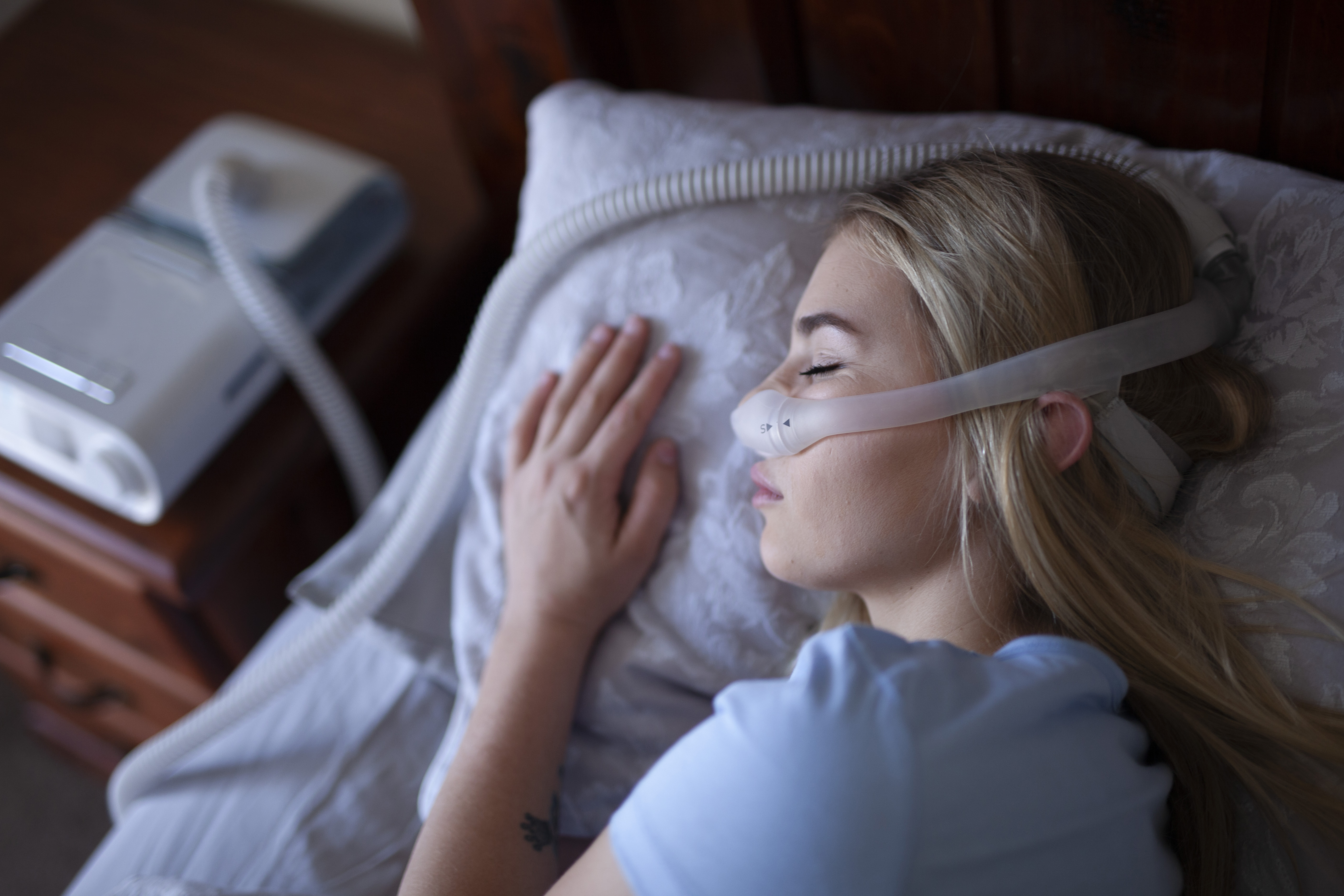Choosing a mask
Finding the right mask can be difficult, especially if you’re a new PAP user, but it’s highly important in order to have a successful sleeping experience. Here we will help guide you to finding the perfect mask based on the factors of comfort, quality, noise, convenience and more.
Comfort
This seems obvious, but a lot of patients stop using their CPAP device because they simply are not comfortable wearing the mask. It may cause pressure sores, bruising and potentially hurt the face due to an improper fit.
If you are experiencing any kind of discomfort wearing a mask, try the following suggestions:
- Contact us for another mask fit. Your quality of life depends on it. In some areas, private insurance benefits may cover masks. Talk to your therapist and they will provide you with the appropriate documentation for you to claim the mask on your insurance.
- Ask your therapist to double check the mask size and fit. Most masks come in several sizes. The first one you try may not be the best one for you. Ask your therapist for a different type of mask to find one that fits you comfortably!
- Try different mask configurations. Surprisingly, going from a full-face to a nasal mask to a nasal pillow system can make the difference in you being compliant to CPAP therapy.
Quality
The quality of mask can make a huge difference in your sleep. Like most things, you get what you pay for, but a little extra expense is worth a better day and nighttime experience. The masks we carry and suggest are high-quality and will be great for anyone looking to improve their CPAP experience.
Quietness
Most masks have exhalation valves. In order for you and your partner to have a good night's sleep, you need to have a quiet system.
When looking for a quiet mask, look for the following characteristics:
- Large exhalation ports: the more space available for the air to escape, the less noisy it is.
- You also want to look at the type of exhalation ports that are offered in a mask. There are various types of exhalation ports, so find out what is quiet for you. Make sure you ask your therapist to help you determine what is the quietest mask for you.
Convenience
The mask may fit you perfectly but is inconvenient resulting in you not using it, and it’s not doing any good if you're not wearing it. To help with the convenience, try looking for some of the following features.
Convenient features:
- It’s easy to put back together when you take it apart. Remember, the first few times putting the mask together may be difficult, but that shouldn’t last beyond that.
- Fitting it on a nightly basis can take time out of your day. If you have to refit a mask every time you put it on, you are less likely to wear it. So make sure that you have a CPAP mask that’s user friendly to you.
Air Venting
Check the position of the exhalation port. Sometimes, where the exhalation port is, it could provide you or your partner with unnecessary airflow. For example, if the exhalation port is placed squarely in the middle of the mask and there is no cover to divert the airflow, the air can blow straight into your partners face, back, or neck. That, in return, can wake up your spouse or your partner and therefore waking you up at the same time. If your spouse is not having a good sleep, then you are not having a good sleep.
|

